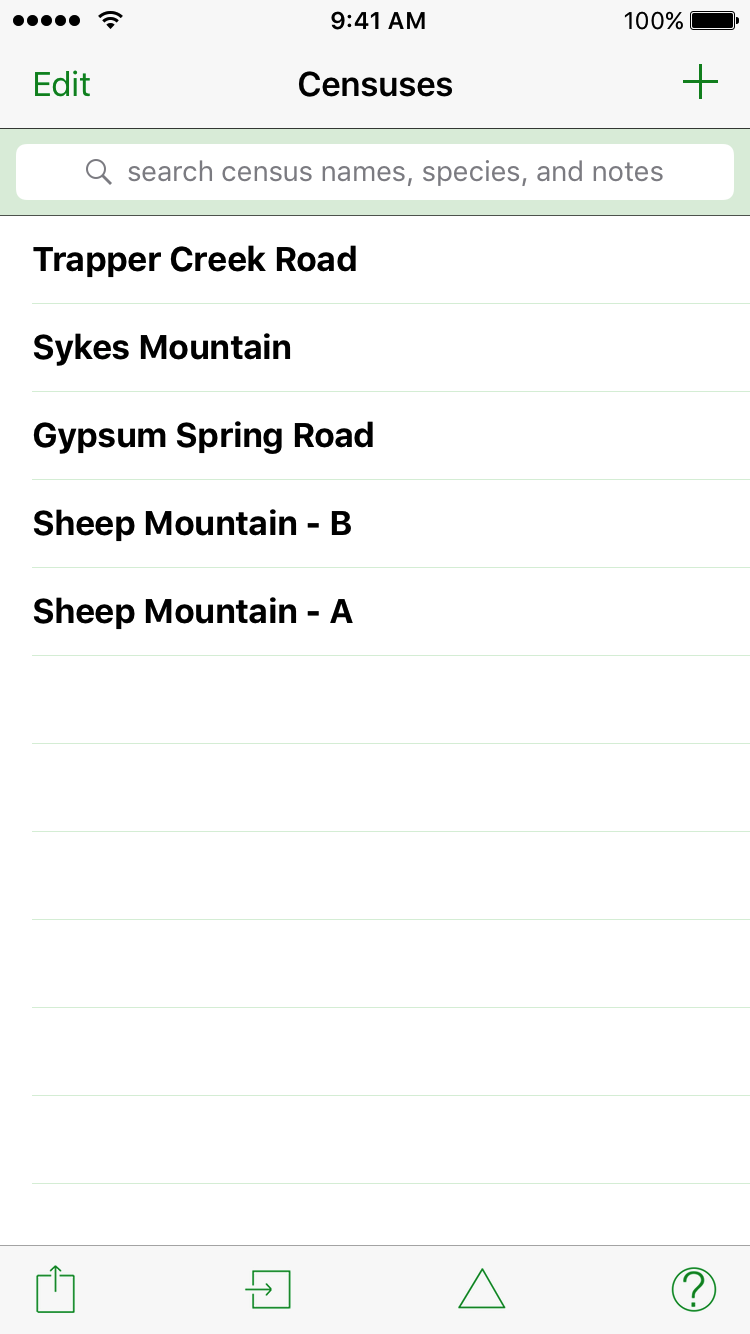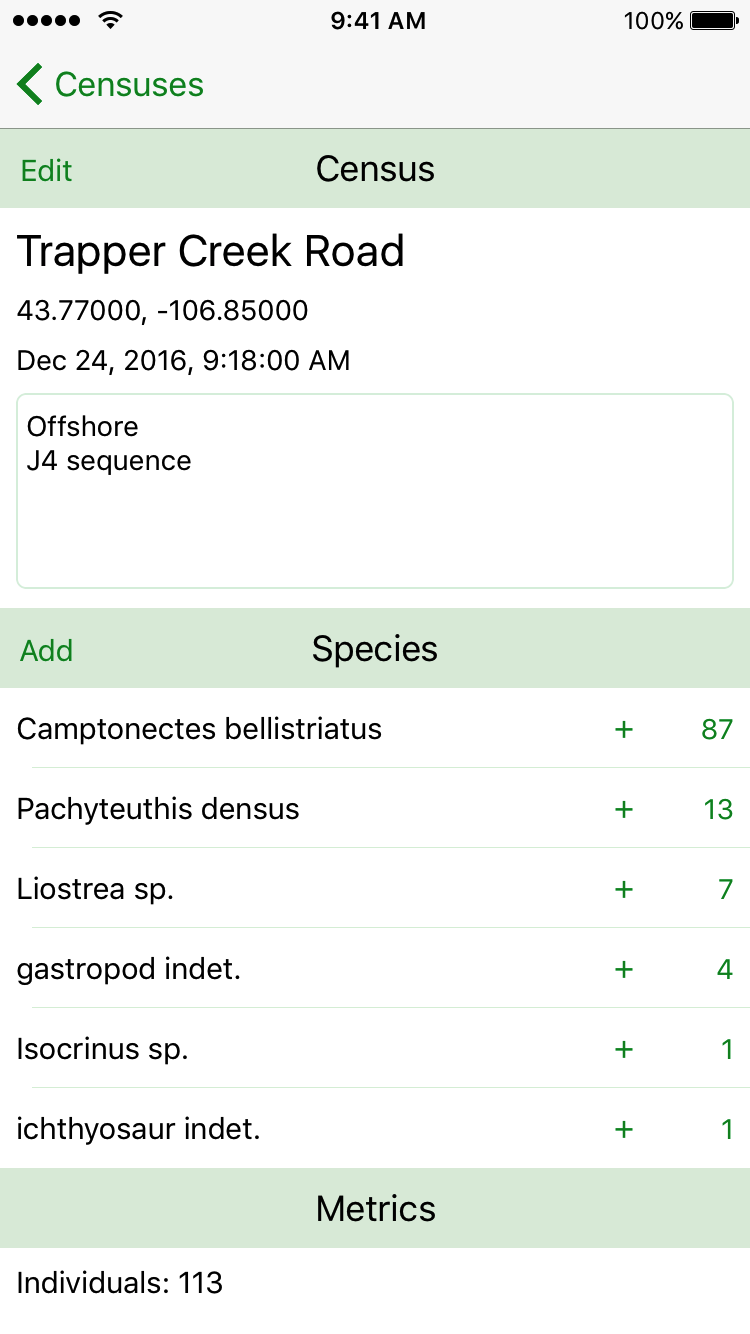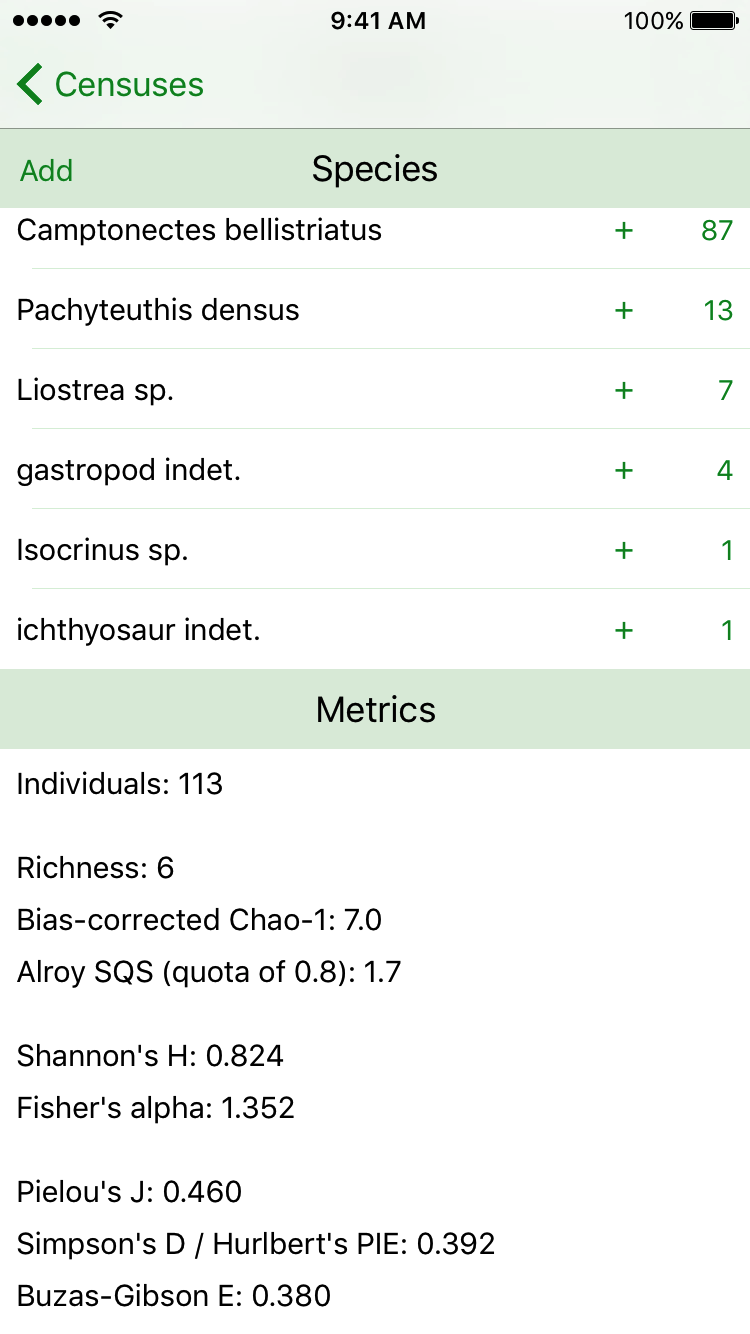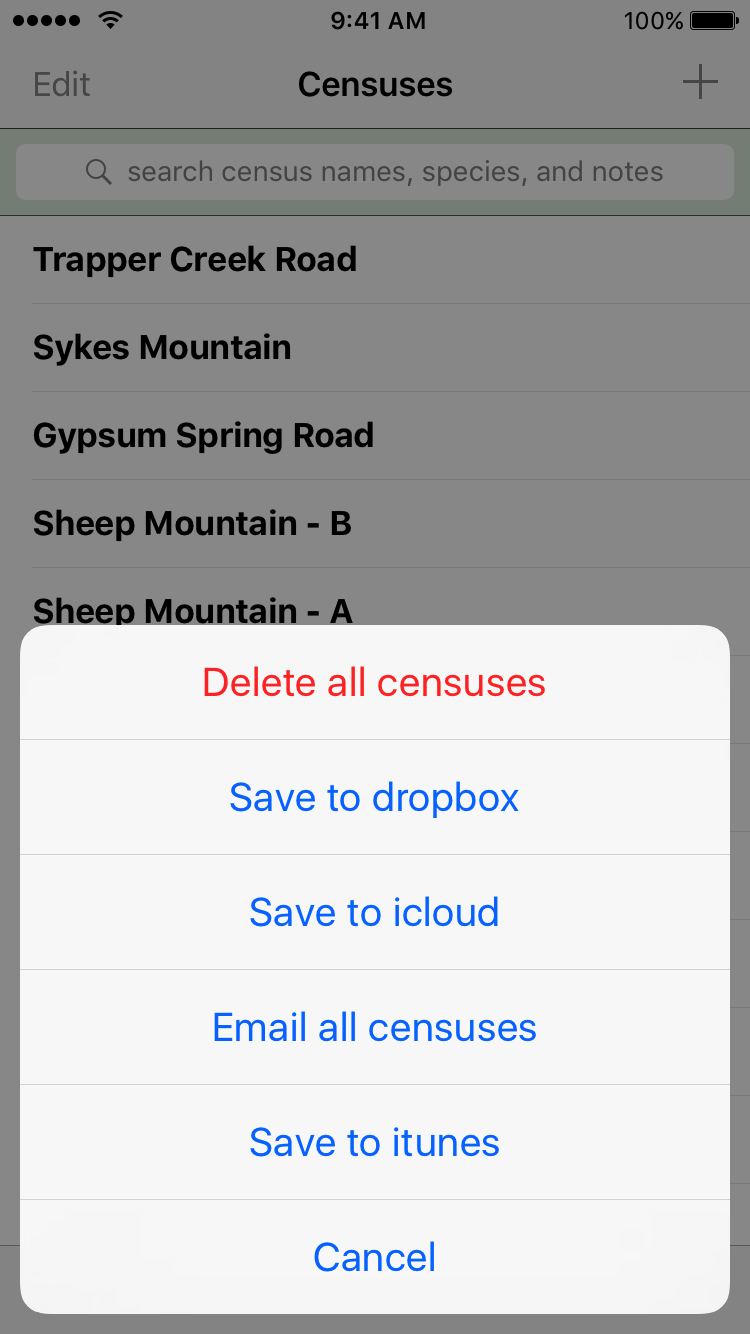Taxon
Ecological counts: easy in, easy out
Taxon for iOS has been removed from the App Store and is no longer available
Taxon makes it a snap to make ecological counts in the field and export the data for analysis. Create a census, and it’s automatically tagged with your coordinates, date, and time. Enter any notes you want about the census. Add species and increment their abundances as you count them. You’ll see diversity metrics updated instantaneously. Export all of your data through Dropbox, iCloud, iTunes, or email - they’re saved in a standard, widely read format. It’s a censusing dream-come-true: easy in, easy out.
Taxon was designed to make field entry of ecological abundance data fast and easy. Just tap a button and enter the name of the census, and one is created and tagged with the date and time, and with the GPS coordinates. The notes field is free-form, so you can enter any details about the census.
Once you’ve made a census, tap a button to enter a new species as you encounter it in your census. If you’ve entered that species in another census, Taxon will offer to autocomplete its name, saving you time. There’s also an import button where you can import all of the species you’ll encounter, saving you a lot of time and heading off any chance of spelling errors. If you do make an error, there are two ways to fix it, and they're both easy. Press and hold a species name inside of a collection and you’ll be asked for the new name. To correct a species spelling in the entire database, tap the triangle at the bottom of the screen.
Tap the plus button next to a species’ name to increment its abundance as you encounter it. If you need to change the abundance value manually, just tap on it and change it. It’s all simple and fast.
As you enter species and change their abundances, a suite of common metrics is calculated on the fly, including the number of individuals, species richness, bias-corrected Chao-1, Alroy’s SQS, Shannon’s H, Fisher’s alpha, Pielou’s J, Simpson’s D (also called Hurlbert’s PIE), and the Buzas-Gibson E. All of these help you keep track of the properties of your census as you go, letting you see patterns right in the field.
When you want to back up your data or export it for heavy-duty data analysis, Taxon has you covered. You can export your data through iCloud or Dropbox, you can email your data, and you can access it through Music.app (formerly iTunes) on your Mac. The data file is saved as a standard comma-delimited (.csv) file, ready to be read into R with a single command or imported into any spreadsheet.
Did I mention that it works on both the iPad and iPhone? Leave that clipboard back in camp!
Screenshots




